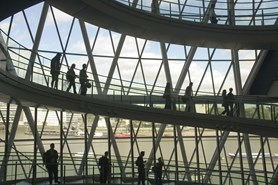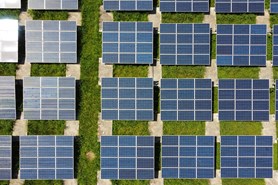As we bid farewell to another year, I always look forward to seeing which words the various dictionaries select to sum up the preceding 12 months. I felt Collins’ choice of ‘permacrisis’ was particularly apt in 2022, the year of post-Covid economic impact, Liz Truss and the Ukraine War. This year’s choice, less dramatic but no less prescient, is the term ‘AI’.
“This may not be a year that sets the industry alight, but it need not be a complete dumpster fire, either”
Picking up on the theme of artificial intelligence, one thing seems certain as we move into 2024: technology will continue to tighten its hold over all of us. I read recently that ChatGPT rocketed to 173 million users within just six months of launch, becoming the fastest-growing digital service for consumers in history. Even in construction, an industry that is notoriously slow to adapt, we’re seeing AI tools utilised with increasing regularity to help us schedule and deliver projects better – improving productivity, reducing delays and even helping to correct our grammar when writing columns for the likes of Construction News.
Despite Elon Musk’s warnings that it threatens to bring humanity to its knees – perhaps prompted by his own chatbot dubbing him ‘overrated’ – I think 2024 will be the year that sees construction embrace AI and we begin to register tangible impacts on timelines and bottom lines as multiple streams of technological advancement converge.
Election-year limbo
It will be interesting to see how tech is utilised elsewhere, too. No doubt it will be put to work by political parties the world over in the run-up to the 40 national elections slated to take place in 2024.
According to Bloomberg and The Economist, 2024 is going to be the biggest election year in history, with votes happening everywhere from Taiwan to Tuvalu. After a series of somewhat chaotic years in the wake of the pandemic, far from delivering the widespread stability we so desperately need to instil confidence, the next 12 months look likely to fan the flames of uncertainty instead.
As governments seek to cling to power, many will prioritise vote-winning announcements that will endear them to the hard-working electorate, instead of committing to strategic spending and policy that would bolster the global economy in the long term.
We saw evidence of this here in the UK in the chancellor’s Autumn Statement in November, which was notably lacking in measures to support the construction industry in any meaningful way. It seems Rishi Sunak’s Conservative government is the latest victim of ‘election paralysis’, shying away from taking action to move our sector forward in favour of self-preservation and procrastination.
In the property and construction sector, delays at the top inevitably trickle down and impact the pipeline – with the supply chain preferring to hold off until the election is done and dusted before committing to investments. I think they may have a bit of a wait on their hands. As we see contractor after contractor going to the wall, false claims about prosperity around the corner seem hollow and next year will not get any better for them, I am afraid.
Gradual growth is growth
However, I am by nature an optimist. So, while the mood among my peers may be subdued as we enter a period of political limbo, I take heart from Glenigan’s forecast of gradual growth and echo its sentiment that (slightly) better times are on the horizon.
This may not be a year that sets the industry alight, but it need not be a complete dumpster fire, either. It is true 2023 did not end on a high, with a stagnant economy leading to downturns in activity across the private and public sectors, but going forward inflation looks set to continue to fall, materials prices for the most part are settling, and growth, no matter how gradual, is still growth. Perhaps when the time comes to evaluate, dictionary corner will label 2024 as the year of “economic stupefaction”.
First published on Construction News on 4th January 2024

Graham Harle
Chief Executive Officer
- graham.harle@gleeds.com
- +44 (0)207 631 7000



